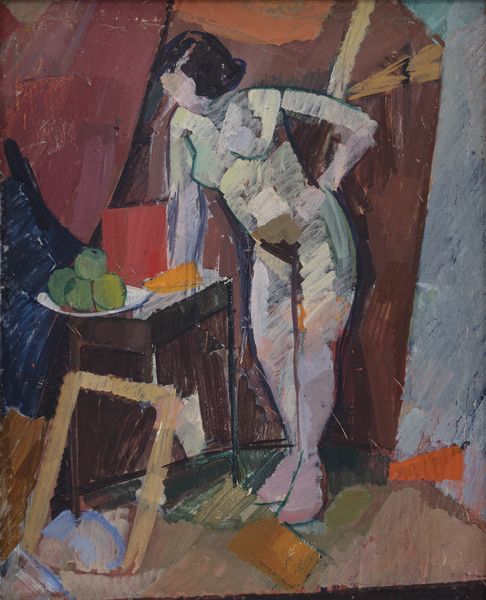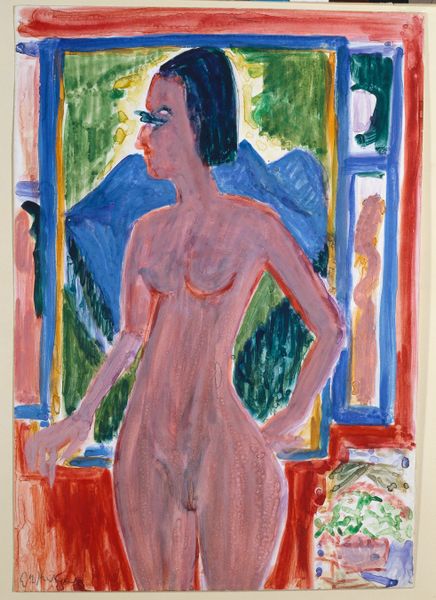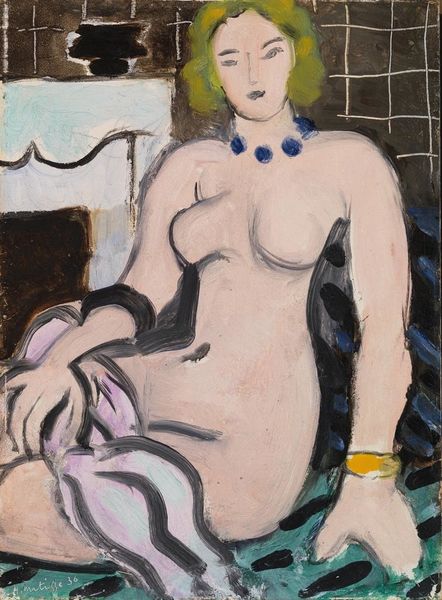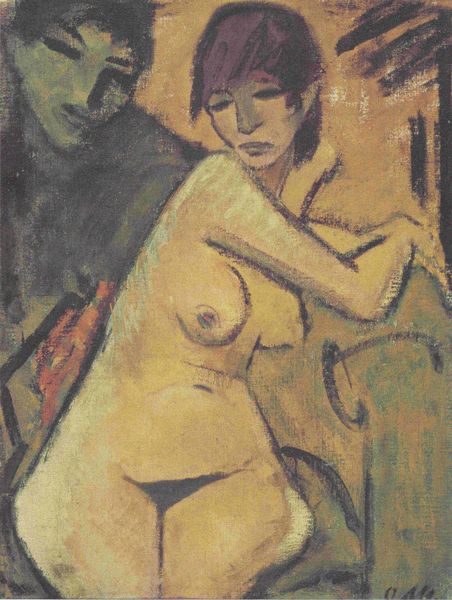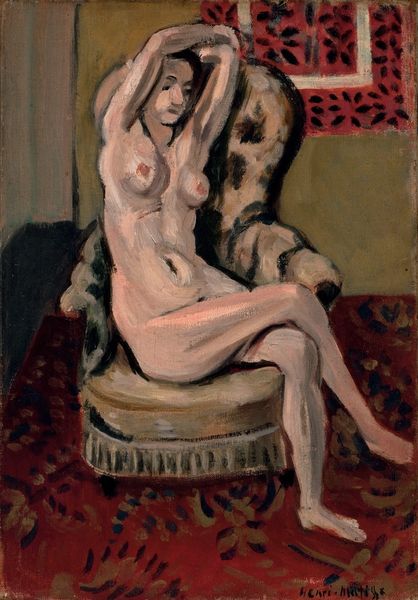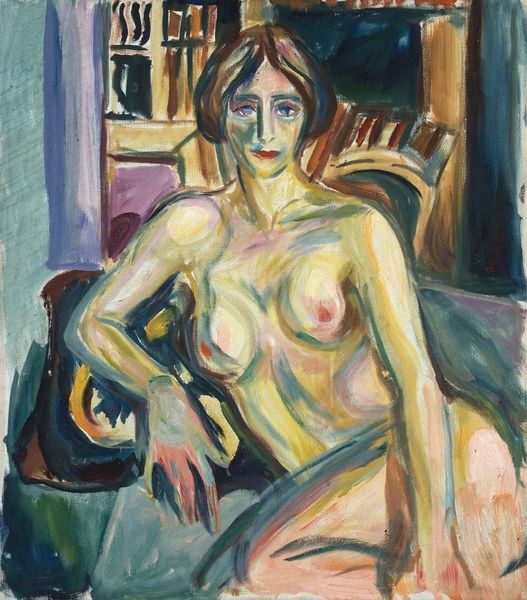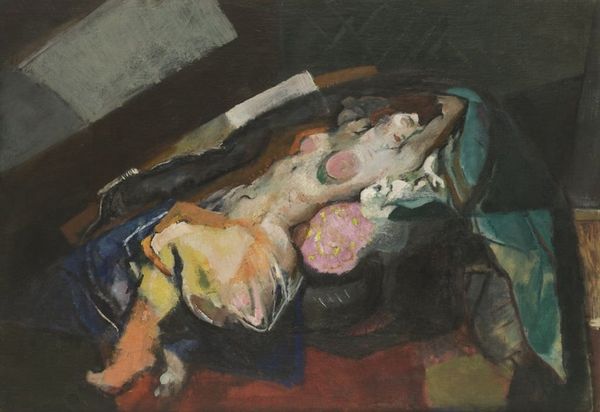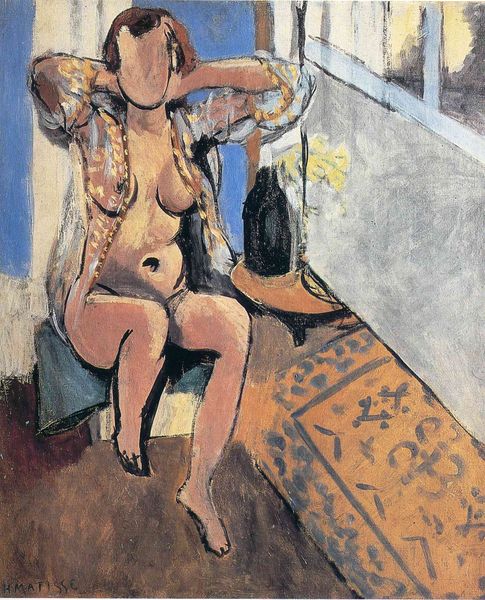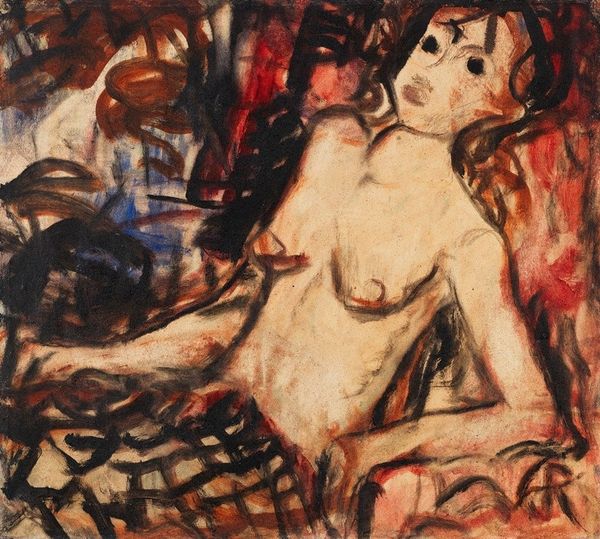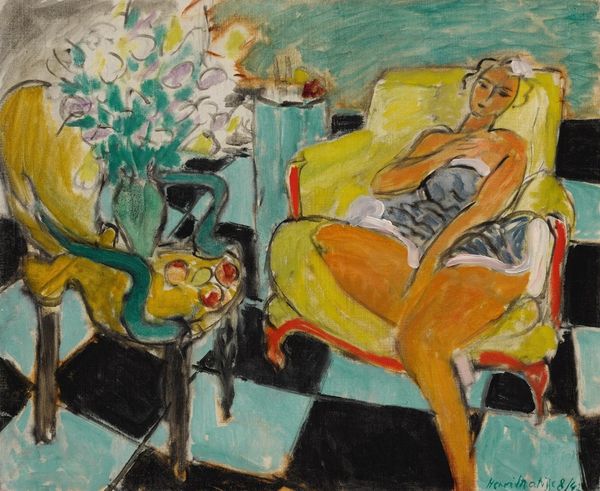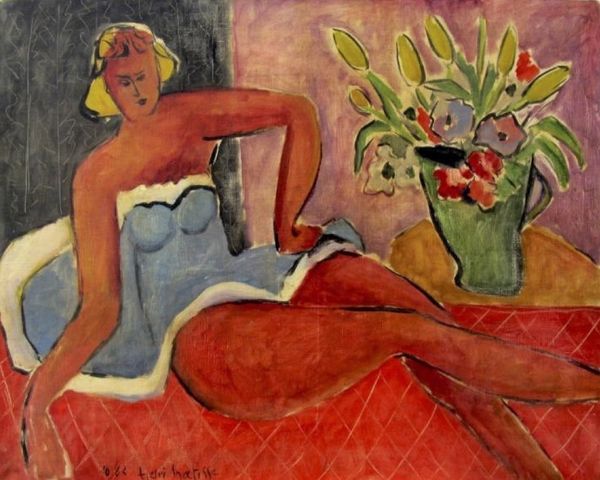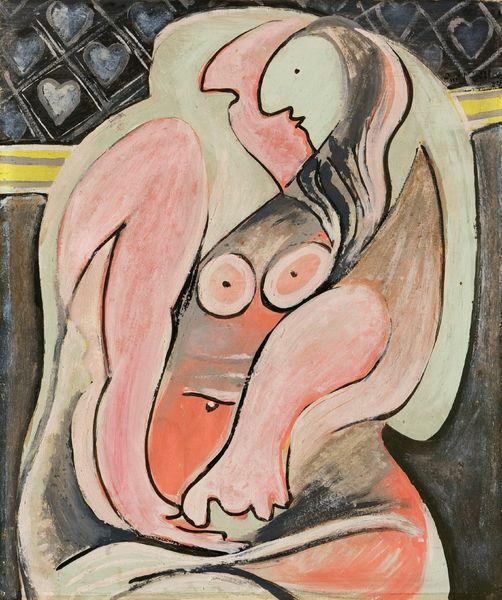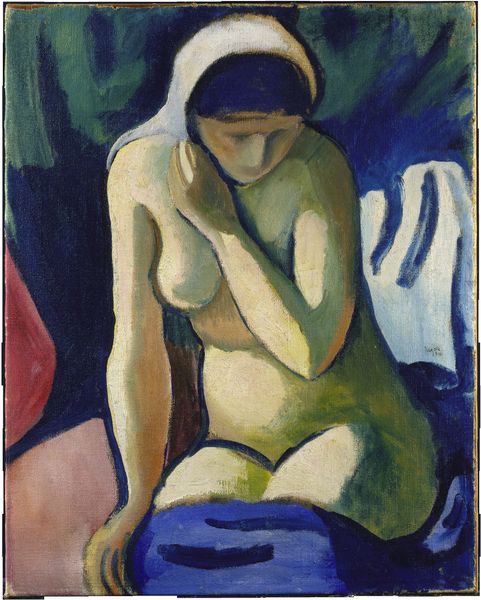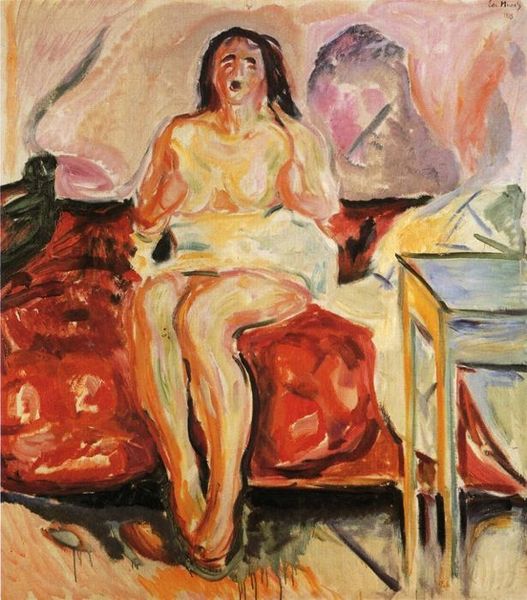
Copyright: Henri Matisse,Fair Use
Editor: This is Matisse's "Odalisque with a Tambourine" from 1925, painted in oil. The vibrant colours and bold strokes create a really striking, almost unsettling atmosphere. What do you see when you look at this piece? Curator: I'm drawn to how Matisse uses the materiality of oil paint itself to convey a sense of the scene's constructed nature. Note the thick impasto, especially on the patterned fabrics and the flesh tones. Consider this in relation to the history of Orientalism; Matisse isn't presenting a true likeness, but rather a constructed image dependent on the materials available to him – both the paint itself and the cultural ideas he's consuming. Editor: So, the texture isn't just decorative; it's part of the meaning? Curator: Precisely. Think about the labor involved in applying the paint, the physical act of creating those bold, almost crude strokes. Is it intentionally provocative? And what does it mean to depict the sitter this way? Editor: So he is pointing at the labour of its making, but also raising the topic of orientalism? It wasn't just about painting a nude. Curator: Exactly. Think about the cultural associations the "Odalisque" held for a European audience, then contrast it with Matisse’s seemingly haphazard application of paint. He highlights the labor, disrupts expectations and maybe even challenges ideas about art and its creation. Do you think Matisse engages in that discussion effectively? Editor: It definitely gives me a lot to think about in terms of production, display, and subjecthood. Curator: Me too. The more we unravel these layers of creation and cultural baggage, the more "Odalisque with a Tambourine" reveals.
Comments
No comments
Be the first to comment and join the conversation on the ultimate creative platform.
